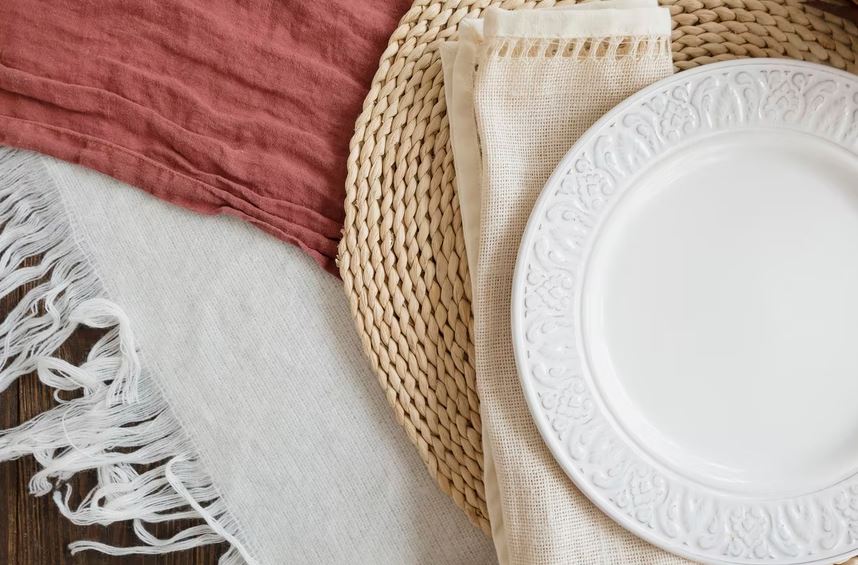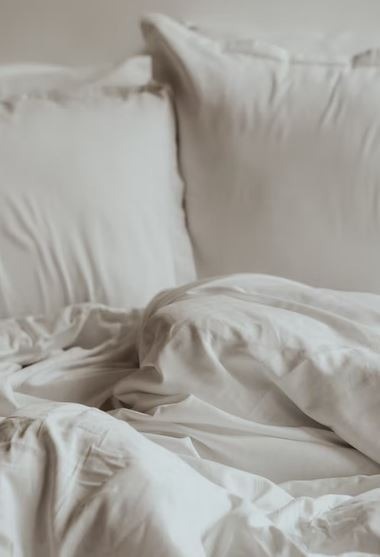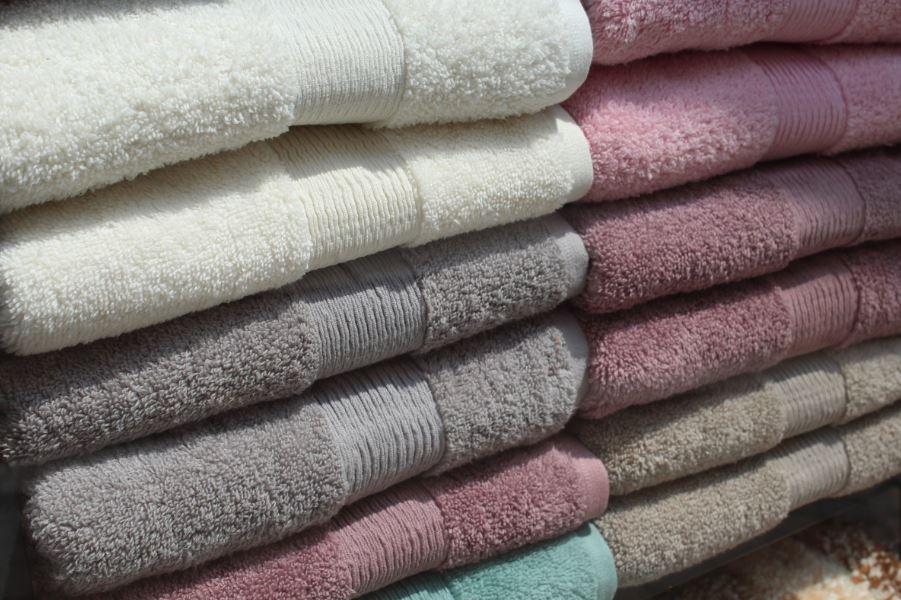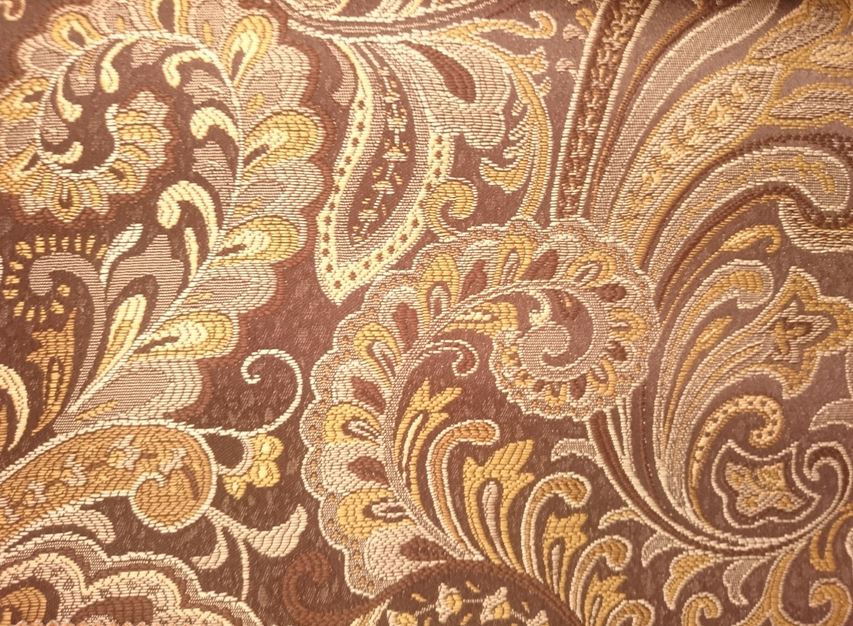Linen is an essential textile used in making everyday items, from home décor to clothing. Since many use linen as an all-encompassing term to describe fabrics and table décor, you may want to know what are several types of linen fabric.
Produced from the fiber of the flax plant, linen is a hard-wearing fabric known for its natural beauty and versatility. This plant is beloved for its softness, durability, and strength.
Types of Linen
There are many types of linen to choose from, and all are valued for their durability, softness, fiber strength, and texture. It can be classified according to its purpose, such as:
Table linen
Table linens, or tablecloths, come in different shapes and sizes to fit almost any table surface. Before considering the color, fabric, and texture, you must first choose a shape and size, as table linens are made to fit round, oval, square, and rectangular tables. Size is determined by first selecting a drop length. Any length is acceptable, but most people choose to have the drop reach either the height of the dining chairs’ arms, the dining chair seat or all the way to the floor.
Besides tablecloths, table linens also include other items like placemats, cloth napkins, and table runners.
Bed linen
Also called beddings, bed linen refers to sheet sets that incorporate all fabric items used in the bedroom. It includes sheets, pillowcases, pillows, duvets, and comforters since they are all partially made of fabric, even if they contain feathers, batting, or other fillings. Bed skirts and dust ruffles can also be considered bed linen, but their functionality is minimal.
Sheet sets vary in size and are available in single, double, twin, full, queen, king, and California king sizes. Beyond sizes, colors, and patterns, sheets are also classified by thread count. Bed sheets usually range between 200 to 1200 thread count. Higher-quality fabrics have a higher thread count.
Bath linen
Bath linens are used to produce bath towels, hand towels, washcloths, and bath sheets. This type of linen combines the weave of linen with loops from its loom and weaving process. The loops make the linen more absorbent. High-quality towels come with thick loops and tight weaves and are woven from purely natural cotton fibers since synthetic fabrics are not as absorbent.
Besides towels, bath linens also include bath mats, rugs, and shower curtains. Bath mats are usually woven from natural fibers for better absorbency, while bath rugs are often made from synthetic fabrics.
Suiting linen
Suiting linens are strong fabrics with a crisp finish. It comes in different weaves like plain, twill, and herringbone. It’s often made into summer shirts, jackets, dresses, skirts, and aprons.
Linen Weave Patterns
Linen is also classified by how it is woven. Here are some of the most common linen weave patterns:
Damask linen
Woven on a jacquard loom, damask linen has flat fibers that produce a smooth texture using a mix of plain and satin weaves. The fibers give the fabric a smooth texture and a reversible design. During the weaving process, the patterns formed to provide this type of linen an ornate look. The designs can often be subtle appearing. It’s widely used for tablecloths, napkins, table runners, and other home textiles.
The name came from the Syrian capital of Damascus, which served as a central point for textile trading between the East and the West. Because of the fabric’s delicacy, damask linen is mainly used for special occasions or as a decorative addition to a room.
Loosely woven linens
Loosely woven linens are designed to be very absorbent. They are mostly used for reusable diapers and sanitary towels.
One of the most common varieties of loosely woven fabrics is bird’s eye linen, which comes with small geometric patterns that look like a bird’s eye. Another variety includes huckaback linen, which is often produced from a pure linen or a blend of linen and cotton. It’s usually woven in the length of towels, making it perfect for highly absorbent yet lightweight bathroom linens.
Plain woven linen
Plain woven linen fabric, also known as glass toweling, is usually found in a checkered or striped pattern of red, blue, or both on a white background. It has a loose weave, making it extra soft and suitable for various cleaning purposes. It’s named this way because it has a loose weave that makes it more absorbent and better suited for cleaning, wiping glasses, and removing smudges.
Holland linen
Holland linen is a type of plain-woven linen treated with oil and starch, making it strong and opaque – meaning it’s hard for sunlight to penetrate it. Holland linen is used to make lampshades and window shades because of its light-blocking properties.
Cambric linen
Also a type of plain-woven linen fabric, cambric linen is probably the thinnest and finest variety of linen fabrics. It’s used to make lingerie, handkerchiefs, and other delicate garments that need delicacy and softness. It gets its name from Cambria, France, where it originated.
Butcher’s linen
It’s a type of strong, plain-weave linen that is coarse and stiff to the touch. It’s commonly used for making aprons and heavy-duty clothing.
Sheeting linen
Sheeting linen is sturdy, mass-manufactured, heavy linen used in beddings and apparel, such as suits and dresses. It has a close weave and a high thread count.
Toweling linen
Toweling, with its looped weave, is ideal for towels. It’s ideal for towels and comes in different widths for cutting out towels of different sizes.
Types of Linen Blends
Due to improvements in fabric production, linen has become more affordable and can be blended with other fibers. Many types of linen are made up into comfy suits and cool casualwear, especially for hot climates. It’s also favored for its strength and superior absorbency.
Linen and cotton
Linen, when blended with cotton, creates a softer and easier-to-handle fabric. The linen adds higher thermal insulation to the blend. The blend keeps the texture of linen but offers the finished product more body. The combination of softness and strength makes it ideal to use for T-shirts, skirts, aprons, and jackets.
Linen and silk
Linen and silk blends look like linen, but they have extra sheen due to silk. It’s a smart-looking fabric that is used for suits, skirts, and dresses.
Linen and polyester
Polyester is usually added to linen to help reduce the number of wrinkles and help the fabric retain its color. It also reduces the cost of the finished product.
Linen and rayon
Rayon is softened when blended with linen, making it a great choice for drapes and other clothing. The rayon in the blend provides a subtle sheen.





